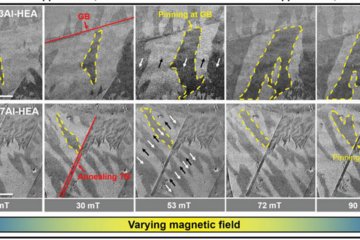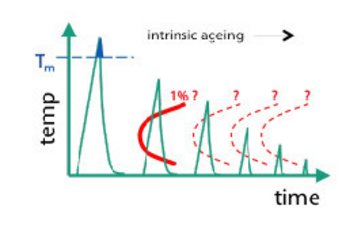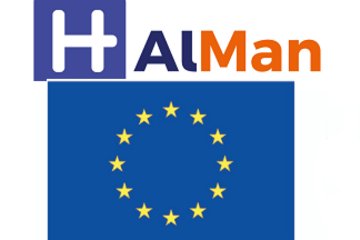All genres
121.
Talk
Ag segregation induced nanofaceting of an asymmetric tilt grain boundary in copper. MS&T17, Materials Science & Technology, Pittsburgh, PA, USA (2017)
122.
Talk
Efficient approach to compute melting properties fully from ab initio with application to Cu. MPIE-ICAMS workshop, Ebernburg, Germany (2017)
123.
Talk
Data driven engineering of advanced materials: Combining high precision and scale bridging. Colloquium at Forschungszentrum Jülich, Jülich, Germany (2017)
124.
Talk
Design self-healing metals with TiNi shape-memory phase. International conference on self-healing materials (ICSHM2017), Friedrichshafen, Germany (2017)
125.
Talk
Ab initio determination of phonon lifetimes up to the melting point. EMRS Spring 2017, Strasbourg, France (2017)
126.
Talk
Development and application of quantum mechanics based simulation tools for the design of modern metallic materials. Seminar at RWTH Aachen, Aachen, Germany (2017)
127.
Talk
Parameter-free Finite-temperature Computations of Stacking Fault Energies for Magnetic Materials. TMS Annual Meeting 2017, San Diego, CA, USA (2017)
128.
Talk
Deformation Induced Martensite: A Thermodynamic Study. TMS 2017, San Diego, CA, USA (2017)
129.
Talk
Parameter-free Computational Design of Magnetic Materials – Recent Advances in Ab Initio Techniques of Coupled Lattice and Spin Fluctuations. MRS Fall Meeting 2016, Boston, MA, USA (2016)
130.
Talk
Discovery of an ordered hexagonal superstructure in an Al–Hf–Sc–Ti–Zr high entropy alloy. Seminar at University of Münster, Münster, Germany (2016)
131.
Talk
Discovery of an orderered hexagonal superstructure in an Al–Hf–Sc–Ti–Zr high entropy alloy. Seminar, Universität Münster, Münster, Germany (2016)
132.
Talk
Development of methodologies to efficiently compute melting properties fully from ab initio. 2nd German-Dutch Workshop on Computational Materials Science, Domburg, The Netherlands (2016)
133.
Talk
Entwicklung von quantenmechanischen Simulationsmethoden für das Design moderner metallischer Werkstoffe. Seminar at University Paderborn, Paderborn, Germany (2016)
134.
Talk
Entwicklung von quantenmechanischen Simulationsmethoden für das Design moderner metallischer Werkstoffe. Seminar at Universität Paderborn, Paderborn, Germany (2016)
135.
Talk
Modern materials design from first-principles: Recent progress and future prospects. DPG Jahrestagung Regensburg, Regensburg, Germany (2016)
136.
Talk
Lattice excitations in magnetic alloys: Recent advances in ab initio modeling of coupled spin and atomic fluctuations. TMS Annual Meeting 2016, Nashville, TN, USA (2016)
137.
Talk
The origin of anharmonicity in fcc solids. TMS 2016, Nashville, TN, USA (2016)
138.
Talk
Shear Transformation in a Non-Equiatomic CoCrFeMnNi High-Entropy Alloy. 2016 MRS Fall Meeting, Boston, MA, USA (2016)
139.
Talk
Thermodynamics and Mechanical Properties of Non-Equiatomic CoCrFeMnNi Alloys. 2016 MRS Fall Meeting, Boston, MA, USA (2016)
140.
Talk
Transformation de phase induite par déformation plastique sévère des aciers perlitiques. XIe Colloque Rayons X & Matière, Grenoble, France (2015)











